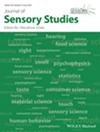The information present on packages of low-sodium food can affect the different segment consumers' sensory and affective perceptions. The objective of the study was to investigate to which extent the package information on the reduction of sodium can reduce acceptance (compromised acceptance threshold—CAT) or cause rejection (hedonic rejection threshold—HRT) in different segments of salty crackers consumers. Consumers were segmented into little, medium, and great health concerns (GHC) using the Health Consciousness Scale, but only the two last groups were studied. Three trials were conducted: blind trial, with no information about the product; trial “Love your life!,” with package bringing information about sodium reduction, traffic light alerts and additional information “Love your life!”; and the trial “Great flavor,” with package similar to the previous trial, but with the additional information “Great flavor.” The hedonic thresholds were determined for each trial and for the medium and great health concern segments. Package information on the sodium reduction had no influence on CAT and HRT values for consumers expressing medium health concerns. However, the additional sentence “Great flavor” negatively influenced the CAT values of this segment. For consumers expressing GHC, the presence of the package allowed a more significant sodium chloride reduction without affecting the cracker sensory acceptance. For this segment, the package with the additional sentence “Great flavor” had the most significant favorable influence on the results. Therefore, for most of the population, food industries need not be afraid to report on the reduction of sodium on food labels.
Hedonic threshold values are very useful for industries that intend to reduce the sodium CAT and without HRT of their products. In addition, the results of this study can help industries in the process of package development for low-sodium products, allowing a more significant reduction of this ingredient without compromising the product's sensory acceptance or without resulting in rejection. Furthermore, it was demonstrated that there is adequate communication, regardless of whether the consumer segment has medium or GHC.


